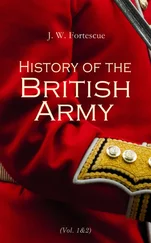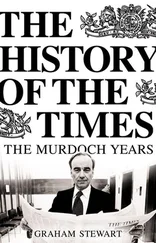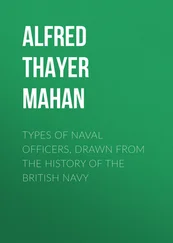| Regiment. |
Colonel. |
Regiment. |
Colonel. |
| 1st. |
{ |
Sir Thomas Fairfax. |
5th. |
Harley. |
| Lieut.-Colonel Jackson. |
6th. |
Montague. |
| 2nd. |
{ |
Major-General Skippon. |
7th. |
Lloyd. |
| Lieut.-Colonel Frances. |
8th. |
Pickering. |
| 3rd. |
|
Sir Hardress Waller. |
9th. |
Fortescue. |
| 4th. |
|
Hammond. |
10th. |
Farringdon. |
Horse.
| Lieutenant-General |
Oliver Cromwell. |
| Commissary-General |
Henry Ireton. |
| Quartermaster-General |
Fincher. |
| Adjutants-General |
Captains Fleming and Evelyn. |
| Marshal-General |
Captain Laurence. |
| Mark-Master General |
Mr. Francis Child. |
Eleven regiments of horse; each of six troops; each troop of one hundred men, besides officers.
| Regiment. |
Colonel. |
Regiment. |
Colonel. |
| 1st. |
{ |
Sir Thomas Fairfax. |
6th. |
Lieut.-General Cromwell. |
| Major Disbrowe. |
7th. |
Rich. |
| 2nd. |
|
Butler. |
8th. |
Sir Robert Pye. |
| 3rd. |
|
Sheffield. |
9th. |
Whalley. |
| 4th. |
|
Fleetwood. |
10th. |
Graves. |
| 5th. |
|
Rossiter. |
11th. |
Comm.-General Ireton. |
The captain-general's bodyguard consisted of one troop, taken from his regiment of horse, under Colonel Doyley.
Dragoons.
Colonel Okey.
Ten companies each of one hundred men, besides officers.
Train.
| Lieut.-General of the Ordnance |
Lieut.-General Hammond. |
| Controller of the Ordnance |
Captain Deane. |
| Engineer General |
Peter Manteau van Dalem. |
| Engineer Extraordinary |
Captain Hooper. |
| Chief Engineer |
Eval Tercene. |
| Engineers |
Master Lyon, Master Tomlinson. |
| Master Gunner of the Field |
Francis Furin. |
| Captain of Pioneers |
Captain Cheese. |
| A Commissary of Ammunition |
| A Commissary of the Draught Horses |
| Two Regiments of Infantry |
{ Colonel Rainborough's. |
| { Colonel Weldon's. |
| Two companies of Firelocks. |
April 30.
The regiments of the New Model were not yet complete when Fairfax received orders from the Committee of Both Kingdoms to march westward to the relief of Taunton. It is extraordinary that this presumptuous body of civilians, even after it had provided the General with an efficient army, still took upon itself to direct the plan of campaign. It is still more extraordinary that Fairfax, who had disregarded it before Marston Moor, should now have meekly obeyed. Charles, whose chief hopes rested in a junction with the gallant and victorious Montrose, was actually moving northward to meet him while Fairfax was tramping away to Taunton. Nay, even after Taunton had been relieved, the sage Committee could think of no better employment for the New Model than to set it down to the siege of Oxford. Fatuity could hardly go further than this. There were in the field on both sides four armies in all, ranged alternately, so to speak, in layers from north to south. Northernmost of all was Montrose, below him in Yorkshire lay Leven with the Scots, south of Leven was Charles, and south of Charles the New Model. And yet the Committee proposed to keep Fairfax inactive before Oxford while Charles and Montrose crushed Leven between hammer and anvil.
May 9.
A brilliant victory of Montrose at Auldearn brought matters to a crisis. Leven was compelled to retreat into Westmoreland; and the Scots insisted that Fairfax must break up from before Oxford and move up towards the King. Charles, meanwhile, with his usual indecision had suspended his march northward for the sake of capturing Leicester, and was now lying at Daventry, uncertain whither to go next. Fairfax called a council of war, which decided to seek out the enemy and fight him wherever he could be found, and, more important still, requested the appointment of Cromwell to the vacant post of lieutenant-general. The Parliament meanwhile had come to its senses, and resolved that the General should henceforth conduct his own campaign without the advice of a committee of civilians. Having done so, it could hardly refuse to sanction the return of Cromwell. He was therefore summoned to headquarters; and Fairfax began to work in earnest. So energetic were his movements, when once the paralysing hand of the Committee was withdrawn, that the Royalists at once jumped to the conclusion that "Ironside" had rejoined the army.
He had not yet rejoined it, and yet the Royalists were right, for it was his spirit, the spirit of discipline, that was abroad in the army. The New Model was by no means perfect when it marched from Windsor at the end of April 1645. The old failings of insubordination, desertion, and plunder, natural enough among a body of men largely recruited by impressment, showed themselves abundantly at the outset of the march to Oxford, but they were put down with a strong hand, not by preaching, but by hanging. Nor was it by severity only that Fairfax brought men to their duty. According to custom, every regiment was told off in succession to furnish the rearguard, but when the turn of Fairfax's regiment came, the men claimed that, being the General's own, they had a right to a permanent place in the van. Fairfax said nothing, but simply jumped off his horse and tramped along in the midst of them in the rearguard; and after this there were no more quarrels over precedence. After a month in the field the newspapers could report that oaths, quarrelling and drunkenness were unknown in the New Model. "Yea, but let Cromwell be called back," they added; and before long this too was done. At six o'clock on the morning of the 13th of June, while Fairfax was sitting at a council of war, Cromwell marched into the camp at Kislingbury at the head of his regiment. It was but a small reinforcement of six hundred troopers, but as they rode in a cheer rose from the cavalry which was taken up by the whole army, as the word ran round the camp that Noll was come.
June 14.
Next day was fought the battle of Naseby. It was not a well-managed fight. After considerable shifting of position, so much prolonged that Rupert came to the conclusion that Fairfax wished to decline an engagement, the New Model Army was finally drawn up on the plateau of a ridge about a mile to the north-east of Naseby village. It lay behind the brow of a hill which slopes down somewhat steeply to a valley below called the Broadmoor, and was formed according to the usual fashion of the time. Six regiments of three thousand six hundred horse formed the right wing, seven thousand infantry under Skippon made up the centre, two thousand four hundred more horse under Ireton made the left. Ireton's flank was covered by a hedge, which by Cromwell's direction was lined with dismounted dragoons.
The disposition of the Royalists was of the same kind, though their force was of little more than half the strength of the New Model. The right wing of cavalry was under Rupert, the centre of infantry under old Sir Jacob Astley, the left wing of cavalry under Sir Marmaduke Langdale. Each army held two or three regiments of infantry in reserve.
Читать дальше












